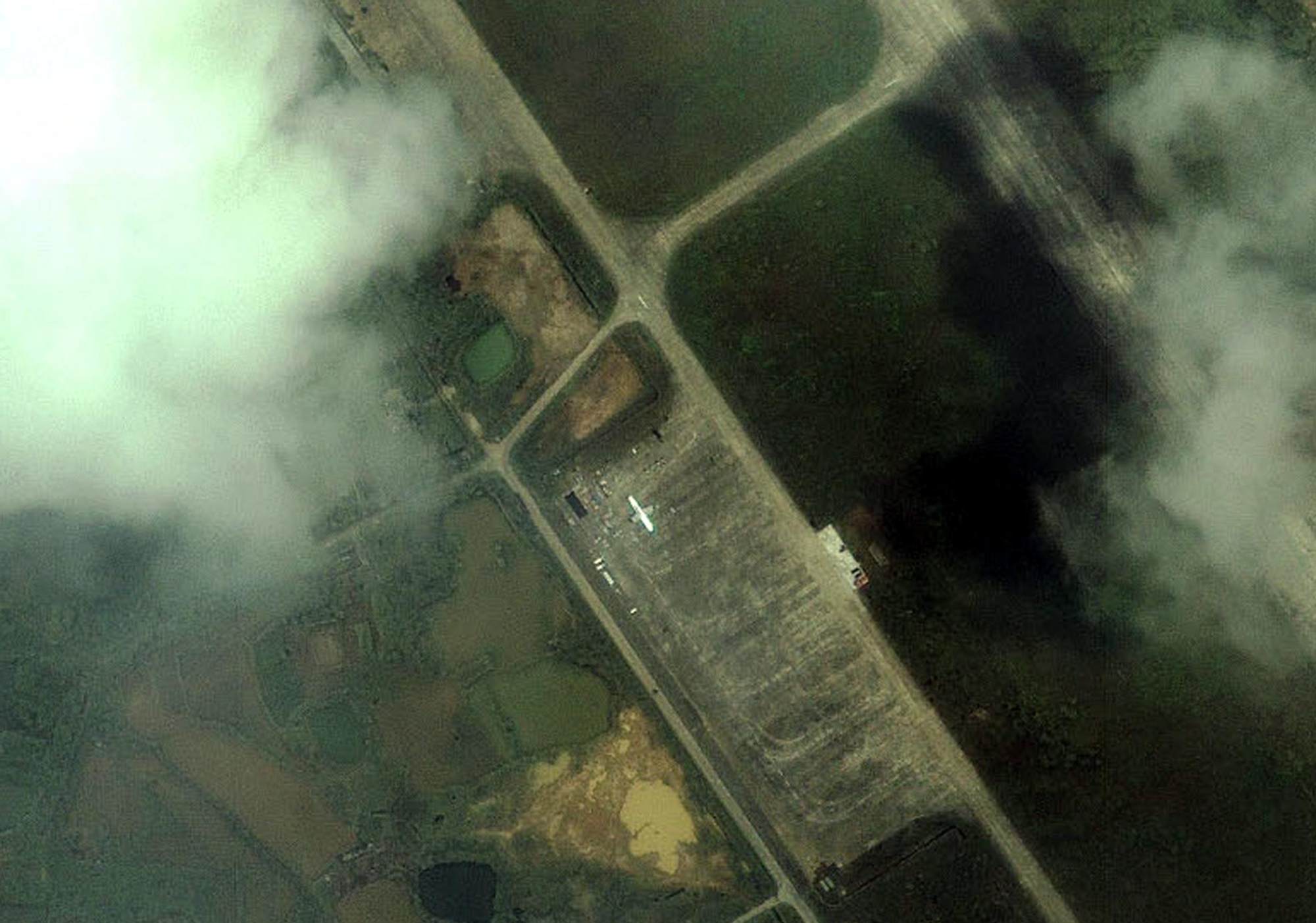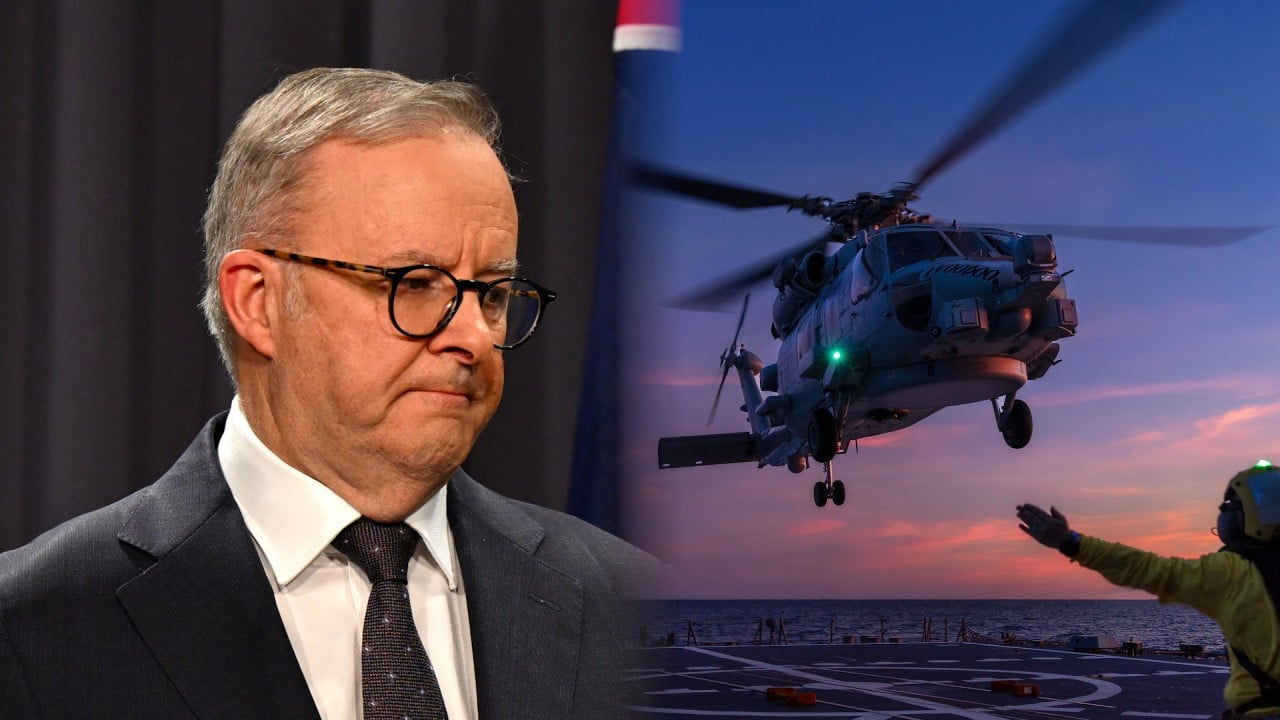A recent aerial confrontation between an Australian military helicopter and a Chinese fighter jet in the Yellow Sea has sparked fresh tensions, but stabilising bilateral ties between both sides are expected to soothe any potential escalation, analysts say.
The incident highlighted the higher frequency of such encounters as geopolitical uncertainty grows, analysts say, suggesting this could shed light on China’s military approach to preventing mid-air collisions, especially after a fatal 2001 accident in Hainan.
Australia’s defence department and Prime Minister Anthony Albanese this week rebuked Beijing over a manoeuvre by a People’s Liberation Army fighter aircraft on Saturday, which had jeopardised an Australian navy helicopter launched from the Australian navy’s HMAS Hobart.
The HMAS Hobart was in the Yellow Sea enforcing United Nations Security Council sanctions against North Korea, when the Chinese aircraft released flares across the helicopter’s flight path, Australia’s defence department says.
The incident sparked domestic uproar, with Australian opposition leader Peter Dutton urging Albanese to raise his concerns directly with Chinese President Xi Jinping, while Shadow Defence Minister Andrew Hastie slammed the Albanese government for being weak on China.
Beijing defended its actions, saying the Australian helicopter had ventured too close into Chinese airspace and was spying on and “disrupting” its naval training in the Yellow Sea, an area between China and the Korean peninsula.
Chinese defence ministry spokesman Zhang Xiaogang said Australia had confused “right from wrong” and the Chinese military was right to warn the Australian helicopter. Australia’s defence chief Angus Campbell rejected Beijing’s accusations on Thursday, saying the helicopter had behaved professionally.
An accurate explanation for such incidents was hard to establish given the lack of information and intelligence, just as it was difficult to know if the Chinese pilot had acted on his own accord or if he had communicated with his superiors or the Australian navy, said Allan Behm, director of international and security affairs at The Australian Institute.
“Everybody assumes it was personally commanded by Xi, but I think that that is so highly unlikely as to be risible.
“There is [however] not enough evidence to suggest malfeasance.”

An explanation for China’s behaviour could be drawn from a 2001 Hainan incident when a Chinese jet crashed after it hit a US military plane near Hainan island, killing its pilot, Behm says.
The American aircraft made an emergency landing on the island, triggering a diplomatic stand-off.
Chinese analysts said the incident had propelled China’s modernisation of its air force and navy and prompted the army to develop a strategy that focused more on offshore defence.
Sometimes, lower level commanders in China could be “overzealous” because they believed an aggressive response was what Beijing desired, said Bryce Wakefield, national executive director at think tank Australian Institute of International Affairs.
“Agencies in China do, from time to time, take steps that are not authorised by the central government. Still, the blame for this provocative behaviour has to be squarely on China,” Wakefield said.
“Because China needs to be in control of its forces, even if sometimes commanders in the field make decisions that are not necessarily coordinated centrally.”
China needs to be in control of its forces even if sometimes commanders in the field make decisions that are not necessarily coordinated centrally
While there was no dispute that both sides were entitled to be in the Yellow Sea, it was natural for Beijing to be more sensitive to overflights and navigations by other countries, said Dylan Loh, assistant professor of foreign policy at Singapore’s Nanyang Technological University.
“I do not think this will derail the overall trajectory of the gradual normalisation of relations between China and Australia, but it does show the risks of unanticipated events hindering that process,” he said.
Ties between the two nations were on the mend from a diplomatic low in recent times, but local Australian media outlets have continued to portray China as a war threat.
“It is very much a thorny issue, but it is not likely to spark a wider conflict,” Wakefield said, referring to the Yellow Sea incident.
The incident followed an “unsafe and unprofessional” skirmish in November when Australian naval divers were injured by a Chinese warship’s sonar pulses off Japan’s coast.
Last week, Australian Defence Minister Richard Marles met his counterparts from the US, Japan and the Philippines to work on the “rules-based order” in the Indo-Pacific.
Wakefield and Behm believed the Yellow Sea incident would blow over, as had the sonar incident, with Behm saying Albanese had acted diplomatically and consistently with an approach towards stabilising the bilateral relationship.



